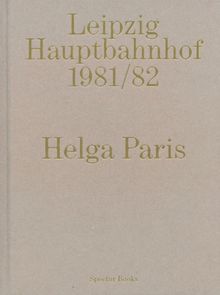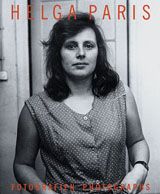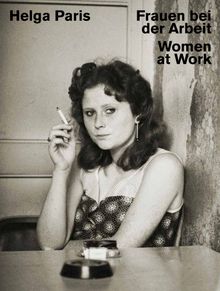PHOTOGRAPHY MONOGRAPHS
|
|
in stock $49.95 Free Shipping UPS GROUND IN THE CONTINENTAL U.S. |
 Helga Paris: Leipzig Hauptbahnhof 1981/82
Helga Paris: Leipzig Hauptbahnhof 1981/82
Published by Spector Books.
Edited with text by Inka Schube.
This book collects 80 black-and-white photographs of the Leipzig Central Station taken by German photographer Helga Paris (born 1938). The series is a masterful study of a particular milieu with unmistakable characterstravelers, a toilet attendant, a woman selling lottery tickets, staff clearing dishes.
PUBLISHER
Spector Books
BOOK FORMAT
Hardcover, 5 x 7 in. / 144 pgs / 73 bw.
PUBLISHING STATUS
Pub Date 9/1/2020
Active
DISTRIBUTION
D.A.P. Exclusive
Catalog: FALL 2020 p. 192
PRODUCT DETAILS
ISBN 9783959053242 FLAT40
List Price: $25.00 CAD $35.00
AVAILABILITY
Out of stock
STATUS: Out of stock Temporarily out of stock pending additional inventory. |
 Helga Paris: Photography
Helga Paris: Photography
Published by Hatje Cantz.
Edited by Elke aus den Moore. Text by Inka Schube.
PUBLISHER
Hatje Cantz
BOOK FORMAT
Hardcover, 9.75 x 11 in. / 207 pgs / 133 color.
PUBLISHING STATUS
Pub Date 4/30/2013
Out of stock indefinitely
DISTRIBUTION
D.A.P. Exclusive
Catalog: SPRING 2013 p. 201
PRODUCT DETAILS
ISBN 9783775734905 TRADE
List Price: $60.00 CAD $79.00
AVAILABILITY
Not available
STATUS: Out of stock indefinitely. |
 Helga Paris: Photographs
Helga Paris: Photographs
Published by Holzwarth Publications.
Edited by Inka Schube. Essays by Helmut Brade, Jean-François Chevrier, Elke Erb and Inka Schube.
PUBLISHER
Holzwarth Publications
BOOK FORMAT
Hardcover, 9.5 x 11.5 in. / 318 pgs / 16 bw / 184 duotone.
PUBLISHING STATUS
Pub Date 3/15/2005
Out of print
DISTRIBUTION
D.A.P. Exclusive
Catalog: SPRING 2005 p. 71
PRODUCT DETAILS
ISBN 9783935567190 TRADE
List Price: $50.00 CAD $60.00
AVAILABILITY
Not available
STATUS: Out of print | 8/1/2007 For assistance locating a copy, please see our list of recommended out of print specialists |

